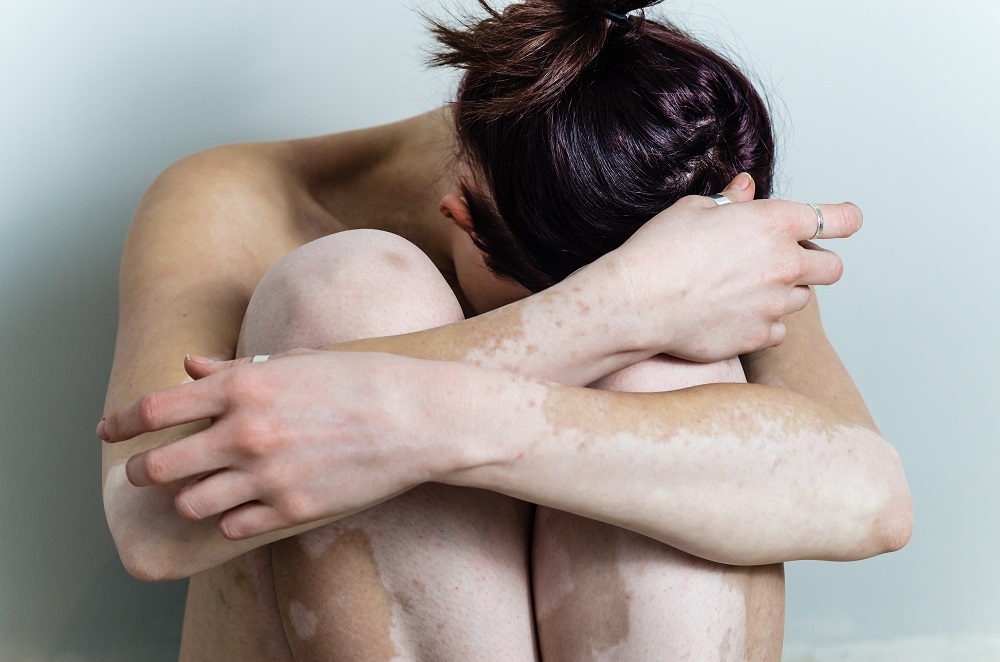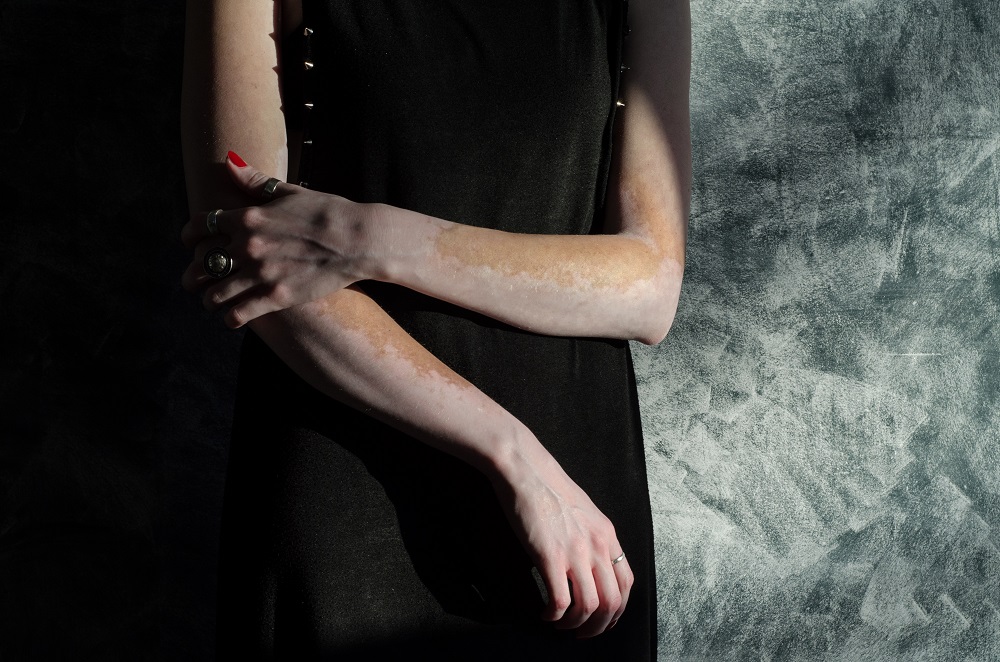- Pigment loss that results in producing milky-white patches on the skin
- Development mostly happens on sun-exposed areas of the skin, e.g. hands, face, feet, arms, lips
- Premature graying or whitening of the hair on the scalp, beard, eyelashes, eyebrows (often before age 35)
- Loss of color in the tissues lining the inside of the mouths
- Loss or change in color of the inner layer of the eye
- In general, vitiligo appears in one of three patterns:
- Focal: limited depigmentation (only on one or a few areas of the body)
- Segmental: loss of skin color only on one side of the body (mostly at a younger age; it progresses one or two years, then stops)
- Generalized: widespread pigment loss across many body parts (the discolored patches often progress similarly on corresponding body parts)
The cause for vitiligo is unknown. Almost all affected people with vitiligo are otherwise healthy and have normal skin texture. However, the condition might be more common in patients with certain autoimmune diseases in which the immune system reacts against the body's own organs or tissues, such as Addison's disease, or thyroid disorders (e.g. hyperthyroidism, hypothyroidism).
In vitiligo, the immune system either may destroy the melanocytes in the skin, or one or more genes might result in the disorder. A few researchers think the melanocytes destroy themselves. Others believe a single event such as sunburn or emotional distress can cause vitiligo.
It’s difficult to predict how vitiligo progresses. Quite a few times the patches stop forming without treatment. In other cases, pigment loss may involve most of the surface of the skin. But the disease is neither life-threatening nor contagious.
Many treatments are available to help restore skin color. But the results vary and are unpredictable. Since a few treatments have serious side effects, the physician might suggest applying self-tanning products or makeup first in order to improve the appearance of the skin. The drug therapy may take a long time, and many approaches before the right treatment is found.
Medications
There are no drugs that can stop the loss of pigment cells. But some medicaments used alone or with light therapy, may help improve the appearance of the skin, such as:
- Creams that control inflammation: A topical corticosteroid may help return color to the skin, especially early in the disease. Although the cream is effective it can cause side effects, e.g. skin thinning.
- Light therapy: This procedure uses narrow band UVB light up to three times a week. The best results may be achieved on the face, trunk and limbs.
- Laser treatment: This therapy brings color back to patches of light skin by treating them with an excimer laser which uses a specific wavelength of UVB light. It may be applied only on small areas, and it's often used in combination with a medication put on the skin. Side effects sometimes include redness and blistering.
Surgery
In case light therapy and drugs don’t work, surgery might be an option. But operation can also be used together with those treatments. The goal of the techniques is to even out the skin tone by restoring color:
- Skin grafting: Very small sections of the normal, pigmented skin are removed and attached to areas without pigments. This therapy is normally used if the patient has small patches of vitiligo. Possible risks: infection, scarring, spotty color, failure of the area to recolor.
- Blister grafting: Blisters are created on the pigmented skin, usually with suction. The tops of the blisters are then removed and transplanted to an area of discolored skin. Possible risks: cobblestone appearance, failure of the area to recolor, scarring.
- Tattooing: Pigment is implanted into the skin with a special surgical instrument. It works very well around the lips, especially in patients with darker skin. Possible risks: no matching skin color, fading tattoos, inability of the tattoo to tan, development of another patch of vitiligo after skin damage.
Self Care & Sun Safety
It’s imperative for people with vitiligo to take good care of their skin:
- Skin protection by using sunscreen lotion to avoid sunburn and long-term damage, especially in the white areas. Sunscreen also minimizes tanning, which results in a smaller contrast between normal and depigmented skin.
- Hiding imperfections by using cosmetics that cover the white patches. This may help the affected person feel better about him- or herself. These cosmetic products can be especially effective if vitiligo is limited to the exposed body areas.
Preventive measures
It’s not possible to prevent vitiligo. But all those who avoid excessive sun exposure and eat healthy may reduce the risk factors for the disease. Since stress seems to belong to the risk factors, especially people with vitiligo in the family should take breaks on a regular basis.



